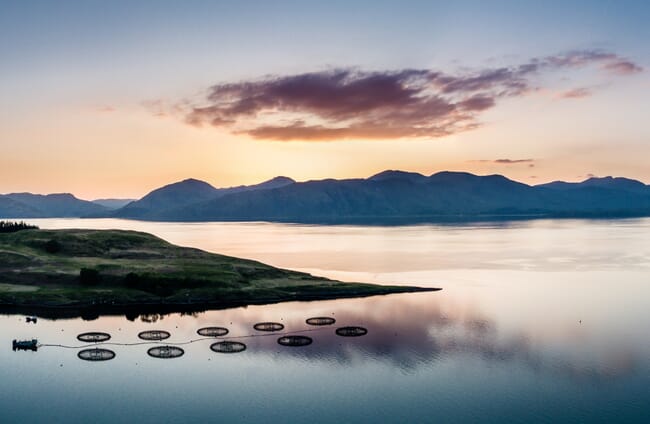Over the last 20 years, there has been significant growth in the amount and diversity of technology used in aquaculture – ranging from fish health diagnostic tools, to remotely operated underwater vehicles (ROVs). However, the vast majority tend to work in isolation, limiting the value of data that can be taken and increasing the amount of time required to monitor operations.
Known as Aquaculture Insights, the pilot project will tackle this challenge by creating a single software package that combines multiple data sources, offering insights that cannot be provided by existing systems. Led by Japan’s Uhuru United, the consortium includes lighting specialist Signify (formerly known as Philips); Norway’s Optoscale; the Scotland-based Sustainable Aquaculture Innovation Centre (SAIC); salmon producer Loch Duart; and SB Telecom Europe. The initiative will also enhance the visualisation and transfer of data from connected devices and systems, beginning with Signify’s underwater LED lighting system and Optoscale’s AI-enabled biomass camera.

Aquaculture Insights is receiving funding from the European Institute of Innovation and Technology (EIT), which is part of the European Union’s Horizon 2020 research and innovation programme.
Yosuke Kurihara, project director of Uhuru United, said: “We are delighted to be leading the consortium on this important and ground-breaking project. We first established operations in the UK not just because it is a global centre for technological development but also because of its leading credentials in the field of sustainability. As such, this project is a perfect fit, using cutting-edge IoT technologies to best understand how we can maximise the efficiency of food production for a more sustainable future.
“We are also very proud to be working alongside companies from across Europe on a Scotland-based project funded by the EU. Scotland and Japan have built very strong links over the years. Being part of a sustainability project within Scotland is also very apposite with the COP26 climate change summit in Glasgow approaching. This is a true post-Brexit project demonstrating how the UK nations can work together to play an important role as a bridge between Europe and the wider world.”
Heather Jones, CEO of SAIC, said: “Better access to insightful data could be transformative for aquaculture, helping the sector to be more efficient and sustainable, while also helping fish farmers to develop new ways of working. Aquaculture Insights could have significant potential for aquaculture, supporting its sustainable growth ambitions, which need to be underpinned by technological innovation and excellence. We were delighted to help secure Loch Duart as the farming partner for real-world trials of this innovative technology.”
Remco Lansbergen, business leader aquaculture LED lighting at Signify, added: “Collaborating under water is the future. With LED lighting we can increase growth, improve the feed conversion ratio of salmon and reduce exposure to sea lice. Making the lighting infrastructure part of an eco-system, along with sensors and data analytics, opens up new possibilities. New data points and interoperability will enable new and advanced use cases and support a self-controlling infrastructure, advancing fish growth in a sustainable way.”


